Five priests were killed in the U.S. between 1981 and 1984, with three definite murders. Are their deaths linked?
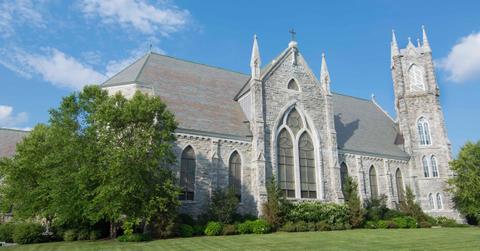
March 20 2022, Published 2:25 p.m. ET
The killing of a priest is a shocking crime. While the priesthood has received a terrible reputation from all manner of scandals in recent years, often through truly abominable crimes, most priests remain pious and generous, often to their own detriment.
Frequently pillars of the community, a strike against them is seen as an attack all, perhaps even God himself. There is a sense from most that a man of God of "off-limits" to crime. But between 1981 and 1984, at least three priests were murdered across the U.S., with two more vanishings and a possible suicide. Some believe it all may be linked together.
Father Reynaldo John Rivera was 57 years old and served as a priest at the Cathedral Basilica of St. Francis in Santa Fe, New Mexico. He could boast a long and distinguished career serving the faithful in the state across several parishes, both large and small. He was described. by those who knew him as kind and pious.
It was a warm summer evening on Aug. 5, 1982, when the rectory at the Cathedral Basilica received was at first seemed like a sad and distressing call around 8:30 p.m. A man called from a payphone claiming to be named Michael Carmello to say his grandfather was dying at a rest stop close to the ghost town of Waldo, New Mexico, stating the elderly man wished to receive the last rites. Waldo, a former railroad community, is remote and sparse, with little remaining of the original town.
The priest who took the call, Father Patrick Gerard, informed "Carmello" that he was partially sighted and could not safely drive out to the location. Instead, Gerard asked that he call back when he had found assistance and alerted his colleague, Father Rivera. Rivera took the call when the seemingly distraught grandson called back, and he agreed to make the journey, with "Carmello" saying he would be waiting in a blue pickup truck at the location on top of La Bajada hill. Rivera never returned.
Three days later, the body of Father Rivera was found several miles from the alleged location of the dying man. He was lying on his back in a field off I-25 south of Santa Fe. Alongside a gunshot wound to the stomach, he had been strangled with a metal wire that was believed to have been a coat hanger. Meanwhile, his brown 1974 Chevy Malibu was found at a rest stop on I-40, the gas tank being empty. Investigators never found his glasses, wallet, or last rites kit and believed that the priest had been tied up and killed elsewhere before being dumped, with the culprit wanting the body to be found.
Investigations looked into the background of Father Rivera showed nothing unusual, yet an FBI psychological portrait of the killer suggested that revenge was the motive behind the killing. However, revenge doesn't have to be personal, with the possibility that the killer was seeking his vengeance against the entire priesthood being a possibility, particularly as he couldn't guarantee that Rivera would have been the one to answer his call.
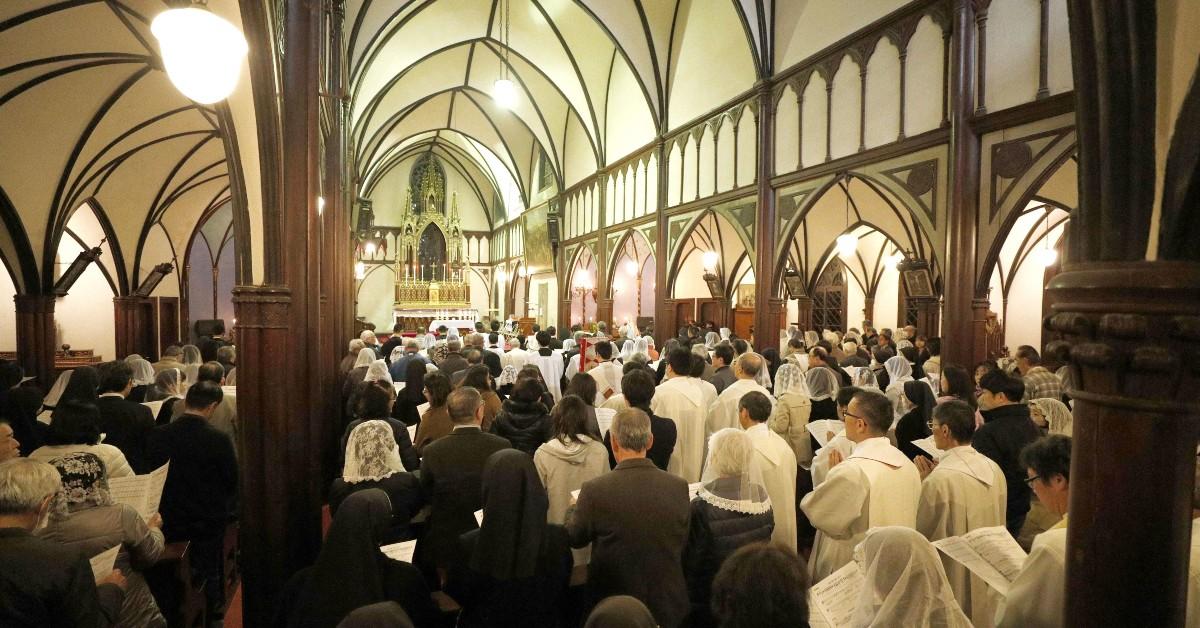
"A Catholic priest was a target, for whatever reason. Robbery was not a motive because there was nothing taken from the priest, other than his last rites kit, And that's a possibility for a souvenir." one of the lead investigators told NBC's "Unsolved Mysteries." "Apparently, the killer would like to relive the experience; every time he looks at it, he remembers killing a priest."
There were few clues as to the killer's identity beyond fingerprints found in Rivera's car, with 50 suspects being investigated and eliminated, including a recent parolee. Despite tips from an outraged local community, the trail grew cold, and the leads stopped developing. With nobody ever being caught, the killing lingers over Santa Fe, with Rivera still being mourned. In 2009, the archdiocese dedicated a new wing of the cathedral to his memory.
"What a violent, hideous crime," Archbishop Michael Sheehan of the Archdiocese of Santa Fe was quoted as saying by KRQU News 13 in 2010. "To ask a priest to come and do his ministry and then at that moment to take him and kill him. Evil thing. Evil thing."
The story of Father Rivera's murder may well have ended there, with the priest being the lone victim of a man driven to the extreme by some known grudge against the church, a case destined to be unsolved. However, revenge is an emotion that is rarely satisfied, and the brutality of the killing alongside the duplicity speaks of a killer likely strike again.
ANOTHER KILLING
It was July 20, 1984, and Father John Patrick Kerrigan, 58, had only just arrived at Sacred Heart Catholic Church in Ronan, Montana. A small city, Ronan comprised of about 2,000 people and lied on the Flathead Indian Reservation, and Kerrigan had just been transferred there. Following a jog, he left a bakery in the city's downtown area and was never seen again, failing to report for morning mass the next day.
When Father Kerrigan failed to return either later in the day or the next, a missing person report was eventually filed on July 23, with police making a grim discovery on July 29. Bloody clothing was found alongside Montana Highway 35 near Polson alongside a bloody coat hanger, all located just five miles from Ronan. The next day, Kerrigan's vehicle — curiously also a brown Chevy Malibu — was found abandoned several miles away. Inside the trunk was his wallet alongside a pillowcase and a bloody shovel.
The body of Father Kerrigan has never been found, and police believe he was murdered, with some linking the killing to that of Father Rivera. The coat hanger is telling, with the possibility that one was used in the murder of Rivera. In both cases, the vehicle was moved. However, Rivera was left in the open, with the killer wanting the body to be discovered, whereas here, the body was hidden, possibly buried.
Following the vanishing of Kerrigan, New Mexico authorities were alerted due to the obvious similarities in the two cases, and efforts began to try and uncover if the two priests had been linked personally beyond their shared membership of the church. Investigations found in the spring of 1983, Kerrigan had spent three months at the Congregation of the Servants of the Paraclete in Jemez Springs, New Mexico. The congregation was used as a retreat for priests suffering personal difficulties such as alcoholism, drug abuse, depression, or sexual misconduct. Despite being in the same state, no link was found to suggest he had even met Rivera.
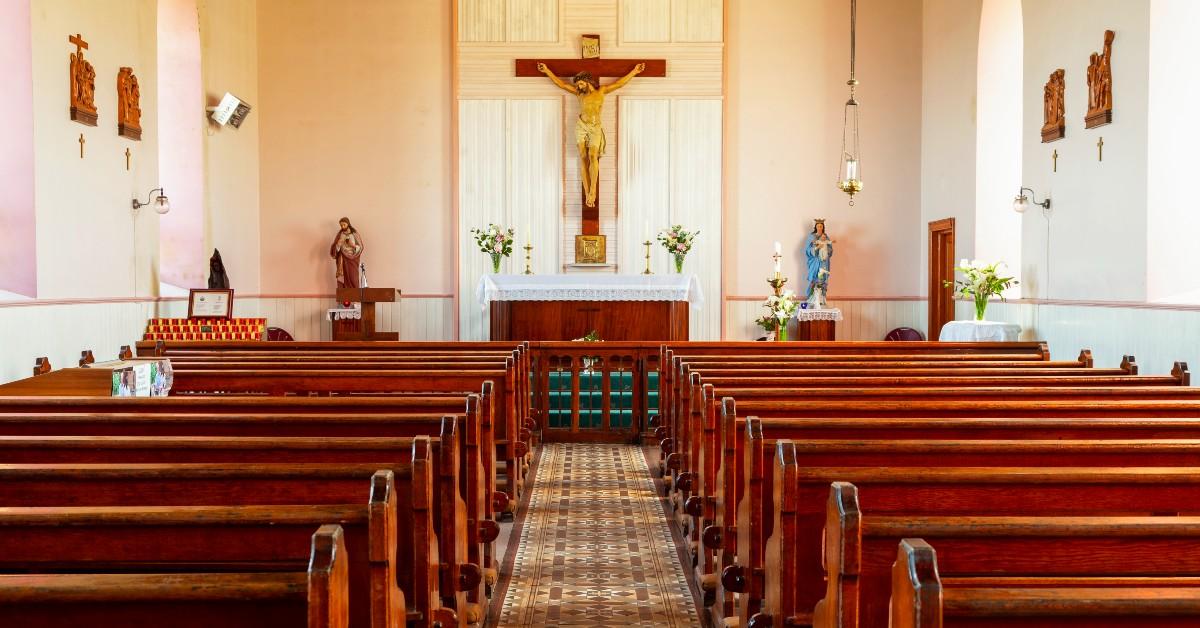
The church confirmed Kerrigan had been at the Congregation of the Servants of the Paraclete but refused to say why, yet it wouldn't be the only link between Kerrigan and claims of sexual impropriety. In 2011, two separate groups of individuals brought a class-action lawsuit against the Diocese of Helena for sexual abuse. Three years later, the church published a list of 80 members of the local clergy suspected or implicated in sex crimes against children. Kerrigan was on that list.
Whether the murder of Father Rivera is linked to the disappearance of Father Kerrigan is a matter of dispute, with some seeing the parallels as evident. In contrast, others deny there is any link at all. Speaking in "The Santa Fe New Mexican" back in 1992, the detective in charge of the Rivera case said "there is no connection whatsoever" between the two cases, highlighting the different disposal methods of the bodies. Deputy Police Chief Gilbert Ulibarri completely disagreed, saying that the dumping of the clothes was just an effective way of showing a priest had been killed.
While the police disagree over a connection, one writer has an entirely different theory, suggesting that the entire Kerrigan affair is a smokescreen. Brian D'Ambrosio, author of "Montana Murders: Notorious and Unsolved," gained access to notes made by detectives on the case and suggested that Kerrigan wasn't murdered at all and instead faked his own death, constructing the scene as murder while he fled. With possible accusations of child sex abuse and the murder of Rivera being well known, the theory may hold some validity.
While some believe that the killing of Rivera and the apparent killing of Kerrigan are linked, others believe the series is far broader than that, with no less than five priests murdered.
MORE BODIES
In December of 1981, James Harry Reyos had a fateful meeting with Father Patrick "Paddy" Ryan, 49. Ryan was a parish priest in the small town of Denver City, Texas, having a population of just 4,700. The town was typically Texan and conservative, and like most small towns, gossip is likely to have been prevalent. Somehow, however, Father Ryan seems to have kept his private life secret, passing himself off as "John" to Reyos and other men he met, with Father Ryan being secretly gay. However, some say that Ryan's secrets went far deeper than that, with two teenage boys saying he once propositioned them for sex.
Reyos had been hitchhiking as a bail bondsman had taken his car. Father Ryan picked him up as he traveled from Denver City to Hobbs, New Mexico, with Reyos headed there to look for work. Reyos, who was also in the closet, struck up a quick relationship with the priest, and the two had several liaisons over the next few weeks. Such was the brazenness of their affair that Ryan invited him to the rectory.
However, on Dec. 20, Reyos claims he left the priest after Ryan assaulted him at the rectory, leaving in haste and intent on leaving town. Not long after, the bondsman was willing to release his car, and Reyos needed a ride to get there. He headed back to Father Ryan and apologized for the incident at the rectory, with Ryan being gracious and agreeing to give him the ride. According to Reyos, the two picked up another hitchhiker along the way. As Reyos got into his own vehicle, he saw the priest drop the hitchhiker off.
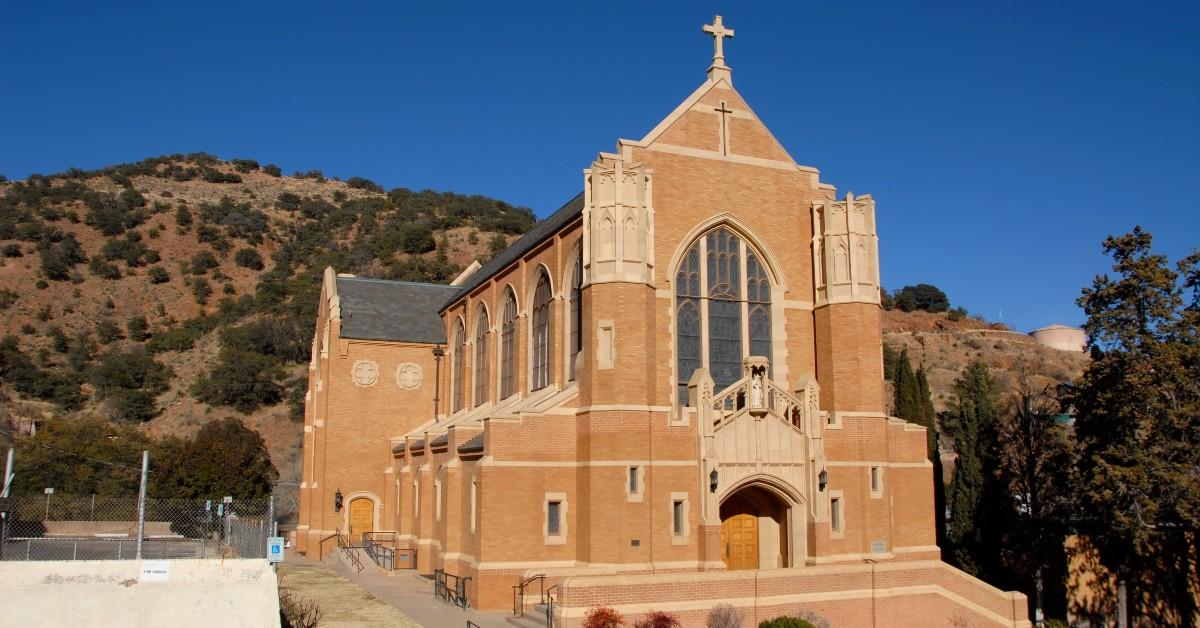
On Dec. 21, Father Ryan checked into an Odessa, Texas motel, giving a false name and details. He was soon found dead in a room covered in blood, his hands bound. The priest was naked and face down, with a slice wound across the buttocks. He had suffered terribly in death and had seemingly fallen victim to one of the many liaisons he's picked up in his car.
However, despite no forensic evidence that he was anywhere near the hotel and plenty of other evidence that he was already 100 miles away in Hobbs, New Mexico, the police arrested and charged Reyos with the murder of Father Ryan. The case essentially rested on a confession that he made early in the investigation but then recanted, claiming later to have felt guilt and shame about his sexuality. Reyos has campaigned to clear his name ever since and says that eyewitness statements and cash receipts from Hobbs show he couldn't have been in Odessa at the time of the murder. A state trooper even pulled Reyos over for speeding around the time of the killing, 200 miles away from Odessa.
The killing of Father Ryan has some similarities to that of Father Benjamin Carrier. Carrier was a distinguished priest from San Diego who worked in many parishes along the West Coast and, at this point, worked at the Our Lady of Light in Descanso, California. The church welcomed transients and hippies through its doors and was perhaps one of the more liberal Catholic churches.
Carrier was suffocated to death at the El Rancho Motel, Arizona, on Nov. 10, 1982. There was no suggestion he was gay or had been involved in any kind of illicit liaison. His wallet and 1981 Toyota pickup truck were missing, suggesting a possible motive of robbery. Like Ryan, his hands had been tied behind his back, this time using electrical tape.
"His vehicle was found two days later up in Las Vegas. Our detectives went up there and processed the vehicle for evidence," Sgt. Lori Franklin of the Yuma Police Department told KYMA News in 2019.
Carrier had last been seen with two unidentified men and days after the murder, described as being in their early 30s, around 5-feet-6-inches tall and white. One of the two men was unusually carrying a cane with a skull at the hilt. In another similarity to the Ryan case, not long after the murder, the San Diego Union-Tribune reported the priest had a history of picking up hitchhikers. On one occasion, Carrier had had a knife held to his throat.
Local witnesses suggested a link between his previous generosity and the killing, with some saying they saw Carrier pick the two men up earlier in the day. Meanwhile, at the motel, the manager said that he observed one of the men sitting in Carrier's truck, and the priest had paid for two people to stay the night, perhaps indicating he had tried to get them a room out of his own pocket.
Despite questioning several people in the case, the trail was cold very quickly, and nobody was ever brought to justice for the murder.
"I think of it quite often; there are times that I remember that particular case. I grew up Catholic. You never think of a priest getting murdered, so that's a big deal," Yuma Fire Department Fire Chief Steve Irr told KYMA. "He was a passerby in town, murdered in Yuma; it left a lasting impression that I still think about to this day. "
Father Ryan, murdered in Texas, 1981. Father Rivera, murdered in New Mexico, 1982. Father Carrier, murdered in Arizona, 1982. Father Kerrigan, murdered in Montana, 1984.
There are even other names to add to this list. James Otis Anderson, for example, was an Episcopal priest from Townsend, Montana, who failed to show up for services at St. John's Episcopal Church on June 13, 1982. Earlier in his career, he had worked with Father John Kerrigan in White Sulphur Springs, Montana, and they were considered friends, his disappearance preceding the murder of Kerrigan.
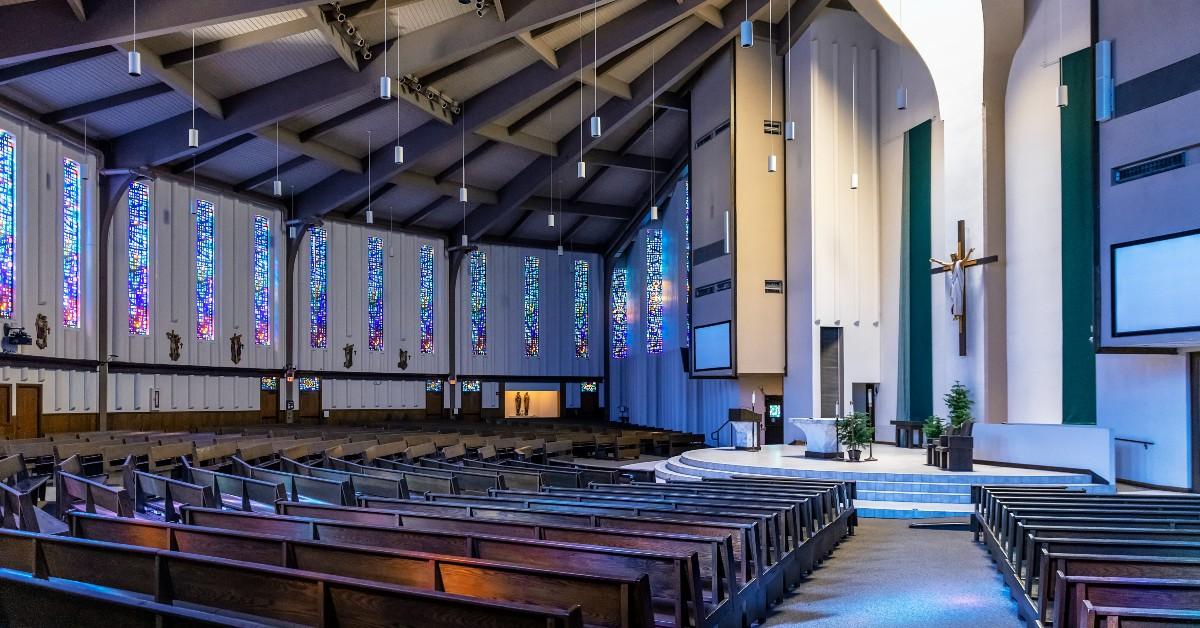
Anderson showed no signs that he was planning on vanishing, his sermon was laid on his desk, and most of his belongings were where they should have been. However, his address book, a treasured afghan, and a pistol were missing. None of his credit cards or bank accounts were ever used again. His disappearance alongside a gun raises alarms that Anderson either believed himself in danger or intended to harm somebody, perhaps himself
According to his wife, Anderson had been acting strangely and had become uncommunicative and distant, some of the reasons that the couple was undergoing a divorce. It would be far from unusual for a man to be suffering in silence, putting on a brave face for his congregation while secretly torn apart by the failure of his marriage and deep buried depression.
Should he have killed himself in a lonely spot, his body may never have been found, and in October of 1982, his silver 1975 Volkswagen Scirocco was found well hidden in a wooded area of White's Gulch in the Big Belt Mountains, northeast of Townsend. Half a mile away, his prayer book, Old Testament Bible, cap, eyeglasses, and clerical collar were all found on a ridge overlooking Townsend. It seemed the most likely explanation was that Anderson had driven out to the area and committed suicide.
And yet, Anderson's ex-wife says that he was a poor driver, and it was implausible he would have been able to drive to the location on his own, with the road being one for experienced and skilled drivers. While in cases of depression it is often not a factor, she explained he adored his children and wouldn't have left them behind willingly.
Finally, there's the mystery man. Some say he is a suspect in the killings of Father Ryan and Father Carrier; others say that he too may have been a priest. He was deeply tanned when he walked into Sacred Heart Catholic Church in Boise, Idaho, on Dec. 4, 1982, a month after the murder of Father Carrier. His clothes were "western" in style and suggestive he may have been from the Southwest.
If anyone wondered who the mystery man was, they would be asking for a long time as after entering, he swallowed cyanide. He had no ID, carried $900 with a note saying it was for his burial, and wanted anything else left to the church. He signed the message as "Wm. L. Toomey," an alias taken from a company that manufactured vestments for priests. Investigators used a belt buckle to track him to Arizona, yet that's as far as anyone got to identifying him.
What links these deaths is open to debate and interpretation. The use of the coat hanger, familiar car and other suggestive evidence would seemingly confirm that the murders of Rivera and Kerrigan were the work of the same hand, one that was willing to kill priests in two different states. Father Ryan and Kerrigan seem to have had an interest in children or at least adolescents, while there was no evidence that Rivera and Carrier did. While Kerrigan met his end in Montana, Ryan, Rivera, and Carrier were all murdered on the Southwest Coast, and small towns away from too many prying eyes play a part. Anderson knew Kerrigan, and there's the possibility that Kerrigan may have met Rivera, but nothing for sure.
The links appear, and then they vanish just as quickly. There is the sense of something here between these deaths, of some connection that exists just out of reach. Perhaps a single crazed individual had a vendetta against the church and any priest who crossed his path; perhaps they shared terrible secrets, or perhaps, in the end, coincidence and seeing patterns that aren't there is the only truth. Whatever the real story, at least three men were murdered without justice, two of them seemingly doing nothing more than offering kindness to strangers. They deserved more.
Become a Front Page Detective
Sign up to receive breaking
Front Page Detectives
news and exclusive investigations.
